UPSC Daily Current Affairs- 25th December 2023 | Current Affairs & Hindu Analysis: Daily, Weekly & Monthly PDF Download
GS-I
Pandit Madan Mohan Malaviya
Subject: History
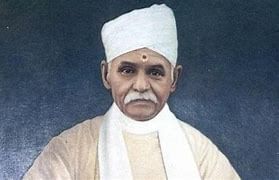
Why in News?
PM remembered Pandit Madan Mohan Malaviya on his birth anniversary recently.
Background:-
- On the occasion of the 162nd birth anniversary of Mahamana Pandit Madan Mohan Malaviya, Prime Minister Shri Narendra Modi will release first series of 11 volumes of ‘Collected Works of Pandit Madan Mohan Malaviya’.
About Pandit Madan Mohan Malaviya:-
- The birth anniversary of Mahamana Pandit Madan Mohan Malaviya is celebrated on 25th
- He is an Indian educationist and politician notable for his role in the Indian Independence movement.
- Madan Mohan Malaviya, the illustrious founder of Banaras Hindu University.
- He occupies a leading place among the makers of modern India.
- He is remembered as an outstanding scholar and freedom fighter who worked immensely to raise national consciousness among people.
Contributions:-
- He Founded Hindu Mahasabha in 1906.
- He Founded Banaras Hindu University (BHU) in 1915.
- He served as Vice-Chancellor from 1919 to 1938.
- He joined the Indian National Congress at its Calcutta session in 1886.
- He was president of INC four times – in 1909, 1918, 1932 and 1933.
- He was a successful legislator, serving as a member of the Imperial Legislative Council for 11 years (1909–20).
- Malviya espoused free and compulsory primary education, opposed the system of indentured labour in the British Empire, and supported the nationalization of railways.
Achievements:-
- He is referred to as ‘Mahamana’.
- In 2015, the government bestowed Malviya with the Bharat Ratna, India’s highest civilian honour, 68 years after his death.
- In 2016, the Indian Railways started the Varanasi-New Delhi Mahamana Express in the leader’s honour.
- Books – A Criticism of Montagu-Chelmsford Proposals of Indian Constitutional Reform, Speeches and Writings.
Source: PIB
Atal Bihari Vajpaye
Subject: History
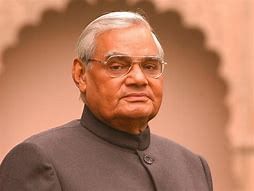
Why in News?
Recently, PM remembers former PM Atal Bihari Vajpayee on his birth anniversary.
Background:-
- Praising his dedication towards the nation, he said that Shri Vajpayee will always remain a source of inspiration.
- The Prime Minister posted on X:
- “पूर्व प्रधानमंत्री आदरणीय अटल बिहारी वाजपेयी जी को उनकी जयंती पर देश के सभी परिवारजनों की ओर से मेरा कोटि-कोटि नमन। वे जीवनपर्यंत राष्ट्र निर्माण को गति देने में जुटे रहे। मां भारती के लिए उनका समर्पण और सेवा भाव अमृतकाल में भी प्रेरणास्रोत बना रहेगा”
About Atal Bihari Vajpayee:-
- Birth: 25, December 1924.
- Born in Gwalior, Madhya Pradesh.
- Died: 16, August 2018.
- Sadaiv Atal: the Samadhi of Atal Bihari Vajpayee.
- He was Prime Minister thrice in 1996, 1998-1999, and 1999-2004.
Political Career:-
- He was the first non-Congress PM to have finished a full term.
- He was elected 10 times to the Lok Sabha from four different States.
- He was twice a member of the Rajya Sabha.
- His birthday, December 25, is observed as Good Governance Day by the government.
Awards:-
- 2015: He was awarded India’s highest civilian honour, Bharat Ratna.
- 1992: He was also awarded Padma Vibhushan.
Ideology:-
- He advocated and practised positive nationalism.
- He proudly took Hindi to the UN first time and spoke it in the General Assembly.
Important Initiatives:-
- He conducted the nuclear test in Pokhran in 1998.
- He himself rode a bus to Lahore in 1999 for Indo-Pak peace.
- He initiated the Delhi Metro rail as a mass transit system.
- He brought in the National Highway Development Project leading to the East-West North-South Corridor or the Golden Quadrilateral.
- He envisaged and executed the first round of Pradhan Mantri Gram Sadak Yojana which connected rural India greatly.
- The New Telecom Policy of 1999 brought in by him was also a crucial part of the Indian telecom revolution.
Flagship Policy Initiatives:-
- Sarva Shiksha Abhiyan: Launched in 2000-2001 to provide free and compulsory education to children between 6 to 14 years.
- Pradhan Mantri Gram Sadak Yojana: it was launched on 25th December 2000 to provide all-weather access to unconnected habitations.
- Pravasi Bharatiya Divas: these conventions have been held every year since 2003.
Source: PIB
GS-II
Good Governance Day
Subject: Governance

Why in News?
Good Governance Day was celebrated recently.
Background:-
- There are many examples of good governance in Bharat’s long history.
About Good Governance Day:-
- Origin: 2014.
- Good Governance Day will be celebrated today on the birth anniversary of former Prime Minister Atal Bihari Vajpayee.
- The day is celebrated on the 25th of December every year.
- Objective: to foster awareness among the people of the country about accountability in Governance and Government.
- Good governance is concerned with the manner in which power is exercised in the management of a country’s economic and social resources for development.
- The concept is related to the responsibility of governments and governing bodies to meet the needs of the masses.
Elements of good governance:-
- Participation: People should be able to voice their own opinions through legitimate immediate organisations or representatives.
- Consensus-oriented Oriented: Mediates differing interests to meet the broad consensus on the best interests of a community. Example: GST council- centre and states together.
- Equity and Inclusiveness: People should have opportunities to improve or maintain their well-being. Example: affirmative policies for women, children and backward classes.
- Effectiveness and Efficiency: Processes and institutions should be able to produce results that meet the needs of their community while making the best of their resources.
- Accountability: Governmental institutions, private sectors, and civil society organizations should be held accountable to the public and institutional stakeholders. Example: elections.
- Transparency: Information should be accessible to the public and should be understandable and monitored. Example: RTI, Draft bills made public to get feedback.
- Responsiveness: Institutions and processes should serve all stakeholders, and respond to their grievances.
Significance:-
- Spread Awareness on Governance
- Fair Treatment of Citizens
- Promote e-governance
Source: Indian Express
Govt aims to set up 17,000 creches under Palna Scheme
Subject: Government Schemes
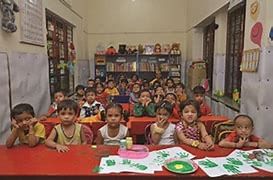
Why in News?
The Union Women and Child Development Ministry aims to establish 17,000 creches in Anganwadi centres across the country out of which 5,222 have been approved to date under the ‘Palna’ scheme.
What is Palna Scheme?
| Details | |
| Objective |
|
| Integration |
|
| Focus |
|
| Target Demographic |
|
| Standard Operating Procedure |
|
About National Crèche Scheme (NCS)
| Details | |
| Launch |
|
| Legal Provisions |
|
| Objective |
|
| Target Group |
|
| Childcare Services |
|
| Operational Hours |
|
| Age Group |
|
| Administration |
|
| Execution |
|
Source: The Hindu
GS-III
Ketamine
Subject: Science and Technology

Why in News?
Ketamine drug was reported to be involved in actor Matthew Perry’s death recently.
Background:-
- In recent years, ketamine has been a subject of widespread debate due to its growing use for treating depression and other serious mental health issues.
About Ketamine:-
- Ketamine is an anaesthetic listed as a hallucinogen by the US Drug Enforcement Administration.
- It is derived from Phencyclidine (PCP), a hallucinogenic drug.
- It operates by blocking the NMDA receptor in the brain and spinal cord.
- It increases the release of the neurotransmitter glutamate.
- It is used for treating mental illnesses in conventional therapy-resistant patients.
- It is also used as a recreational drug.
- A recreational drug is any drug that is used for inducing pleasure or altering one’s state of mind.
- Their types include:
- Stimulants: Increase alertness and energy. E.g., cocaine, methamphetamine, and caffeine.
- Depressants: Produce a calming effect. E.g., alcohol, marijuana, and benzodiazepines.
- Hallucinogens: Produce hallucinations. E.g., LSD, psilocybin, and DMT.
Applications:-
- It is classified as a dissociative anaesthetic with psychedelic properties.
- It is used strictly under medical supervision for anaesthesia.
- Also employed in the treatment of conditions such as depression, anxiety, PTSD, end-of-life distress, chronic pain, and substance abuse issues.
Regulatory Status in India:-
- It is classified as a Schedule X drug in India.
- It is Subject to stringent control and monitoring on a case-specific basis by the prescribing doctor.
- Schedule X drugs are categorized as “restrictive drugs” under the Drugs and Cosmetics Act and Rules.
- The classification of drugs under Schedule X signifies a high level of regulatory control and monitoring.
Source: Indian Express
What is FAME India Phase II?
Subject: Environment and Ecology
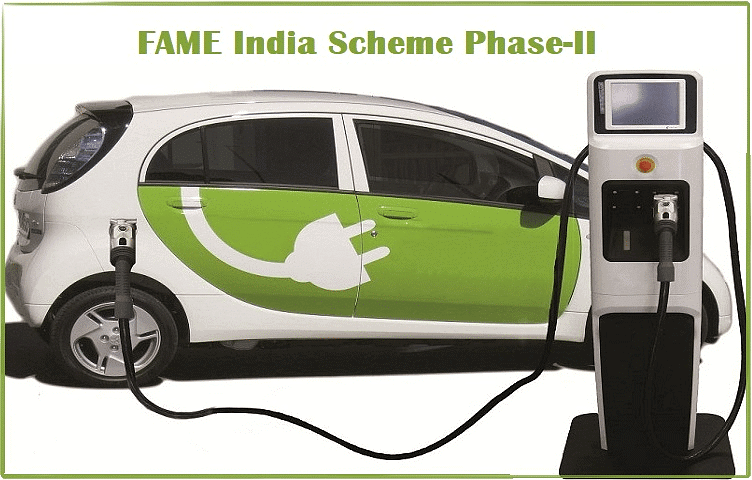
Why in News?
The Parliamentary Standing Committee on Industry recently recommended that the Centre should extend the deadline of the Faster Adoption & Manufacturing of Electric Vehicles (FAME) - II Scheme by at least three more years.
About FAME India Phase II
- Faster Adoption and Manufacturing of Electric Vehicles in India Phase II (FAME India Phase II) is a scheme for promotion of electric mobility in the country.
- It has an outlay of Rs. 10,000 Crore for a period of 3 years commencing from 1st April, 2019. The FAME India Phase II has been extended for a period of two years after 31st March, 2022.
- Implementing Agency: Department of Heavy Industry, Ministry of Heavy Industry and Public Enterprises.
- The main objective of the scheme is to encourage faster adoption of electric and hybrid vehicles by offering an upfront incentive on the purchase of electric vehicles and also by establishing a necessary charging infrastructure for electric vehicles.
- The scheme will help address the issue of environmental pollution and fuel security.
- This scheme is the expanded version of the scheme titled 'FAME India I, which was launched on 1st April, 2015, with a total outlay of Rs. 895 crores.
- Features of FAME India Phase II:
- The emphasis is on the electrification of public transportation, which includes shared transport.
- Demand incentives on the operational expenditure model for electric buses will be delivered through State/city transport corporation (STUs).
- In the 3W and 4W segments, incentives will be applicable mainly to vehicles used for public transport or registered for commercial purposes.
- In the e-2Ws segment, the focus will be on private vehicles.
- Through the scheme, it is planned to support 10 Lakh e-2W, 5 Lakh e-3W, 55000 4Ws, and 7000 buses.
- To encourage advanced technologies, the benefits of incentives will be extended to only those vehicles which are fitted with advanced batteries like lithium-ion batteries and other new technology batteries.
- The scheme proposes the establishment of charging infrastructure, whereby about 2700 charging stations will be established in metros, other million-plus cities, smart cities, and cities of hilly states across the country so that there will be availability of at least one charging station in a grid of 3 km x 3 km.
- Under the scheme of FAME-II, the demand incentive for e-2W has been increased to Rs. 15,000/KWh from Rs. 10,000/KWh, with an increase in cap from 20% to almost 40% of the cost of the vehicle to increase the adoption of e-2W.
Source: DTE
Leprosy
Subject: Science and Technology
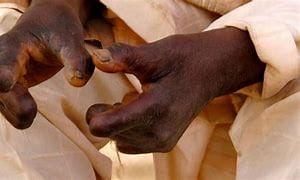
Why in News?
The Odisha government recently declared leprosy a reportable disease in the state.
- Leprosy, also known as Hansen’s disease, is a chronic infectious disease caused by a type of bacteria, Mycobacterium leprae.
- The disease predominantly affects the skin, the peripheral nerves, the mucosal surfaces of the upper respiratory tract, and the eyes.
- Left untreated, the disease may cause progressive and permanent disabilities.
- It is more common in tropical and subtropical areas.
- It is a neglected tropical disease (NTD) that still occurs in more than 120 countries, with more than 200 000 new cases reported each year.
- It is known to occur at all ages, ranging from early childhood to old age.
- Transmission:
- The disease is transmitted through droplets from the nose and mouth.
- Prolonged, close contact over months with someone with untreated leprosy is needed to catch the disease.
- The disease is not spread through casual contact with a person who has leprosy, like shaking hands or hugging, sharing meals, or sitting next to each other.
- Symptoms: It usually takes about 3 to 5 years for symptoms to appear after you come into contact with the bacteria that cause leprosy.
- The main symptom of leprosy is disfiguring skin sores, lumps, or bumps that don’t go away after several weeks or months.
- Nerve damage can lead to:
- Loss of feeling in the arms and legs
- Muscle weakness
- People may also have a stuffy nose or nosebleeds if the disease affects the mucous membranes in their nose.
- Treatment:
- It is curable with multidrug therapy (MDT), and treatment during the early stages can prevent disability.
- Moreover, the patient stops transmitting the disease when they begin treatment.
- It is a centrally sponsored Health Scheme under the National Health Mission of the Ministry of Health and Family Welfare, Govt. of India.
- The Programme is headed by the Deputy Director of Health Services (Leprosy) under the administrative control of the Directorate General Health Services, Govt. of India.
- While the NLEP strategies and plans are formulated centrally, the programme is implemented by the States/UTs.
- The major concern of the Programme is to detect cases of leprosy at an early stage and provide complete treatment, free of cost, in order to prevent occurrence of Grade II Disability (G2D) in affected persons.
Source: Indian Express
|
44 videos|5271 docs|1113 tests
|
FAQs on UPSC Daily Current Affairs- 25th December 2023 - Current Affairs & Hindu Analysis: Daily, Weekly & Monthly
| 1. Who is Pandit Madan Mohan Malaviya? |  |
| 2. Who was Atal Bihari Vajpayee? |  |
| 3. What is Good Governance Day? |  |
| 4. What is the Palna Scheme and its objective? |  |
| 5. What is FAME India Phase II? |  |
















